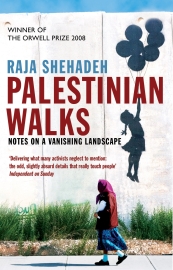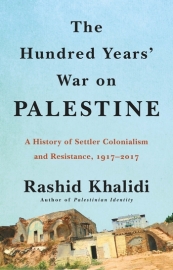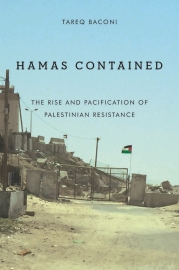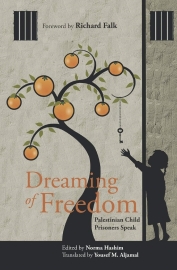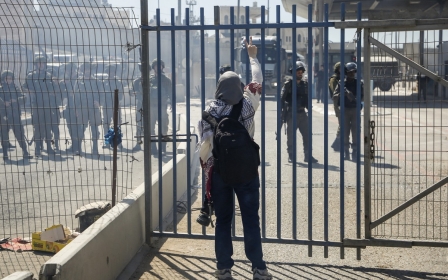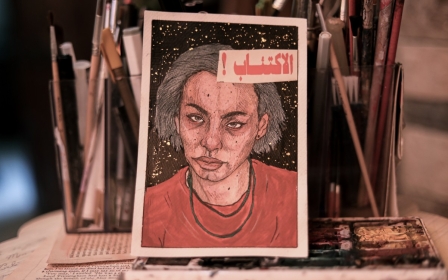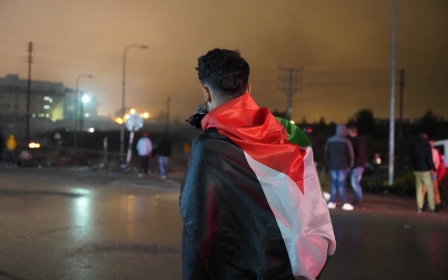Israel-Palestine: 11 books to read on the history of the conflict
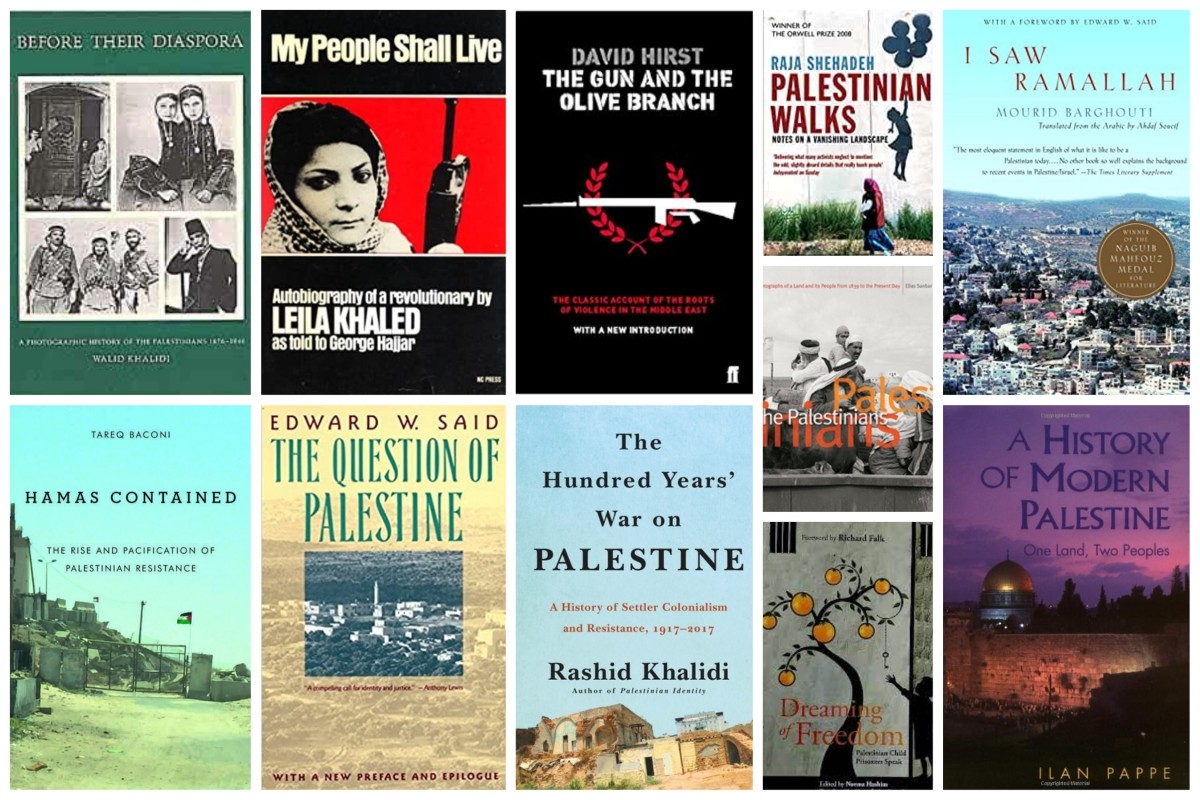
News headlines over the past few weeks have revolved around Israel’s bombardment of Gaza and its repression of protests within Israel and the occupied Palestinian territories of East Jerusalem and the West Bank.
But while journalists have been focused on the ongoing situation, the roots of the crisis go back deep into the late 19th century.
The books contained within this non-exhaustive list offer background on the events that have led to the occupation of Palestine and the circumstances surrounding the establishment of Israel, including the Nakba - the expulsion of 700,000 Palestinians from their homes to make way for the new state.
1. The Question of Palestine
New MEE newsletter: Jerusalem Dispatch
Sign up to get the latest insights and analysis on
Israel-Palestine, alongside Turkey Unpacked and other MEE newsletters
by Edward Said
New MEE newsletter: Jerusalem Dispatch
Sign up to get the latest insights and analysis on Israel-Palestine, alongside Turkey Unpacked and other MEE newsletters
For a long time, Edward Said was the most high-profile and internationally recognised of Palestinian intellectuals. His untimely death in 2003 was a blow for Palestinian advocacy, especially in the US, where few Palestinian voices have risen to prominence.
The Question of Palestine was published in 1979, a year after Said’s better-known volume, Orientalism, and discusses the situation of the Palestinians, including the history of the Nakba, the dispossession and scattering of the Palestinian diaspora, and the misrepresentation of the Palestinian cause in the Western world.
Said also examines the development of Palestinian political movements, particularly the Palestine Liberation Organisation led by his then friend, Yasser Arafat, and the changing perceptions of Palestinian groups towards the question of Jewish identity and Israeli statehood.
Towards the end of his life, Said espoused a humanist vision of a unified secular state between the Jordan River and the Mediterranean, based on equal rights and universal suffrage. The reality on the ground in Israel-Palestine suggests a one-state reality is already playing out. But, more than ever, Said’s ideals need to be pushed to the fore.
Places of Mind, a new biography of Said, by Timothy Brennan, was released by Bloomsbury Publishing this year. The author, a former student of Said, draws on his own conversations with the Palestinian academic, as well as archival sources, and in doing so paints a comprehensive picture of one of the most influential thinkers of the 20th century.
2. The Gun and the Olive Branch
by David Hirst
Few volumes during the past half-century have been as contentious about the Israel-Palestine conflict as David Hirst’s The Gun and the Olive Branch. First published in 1977, it was initially savaged in the UK and ignored in the US (the first 14 pages of subsequent editions detail this).
Hirst's narrative was the first of international note to question the pro-Israeli orthodoxy about the state’s creation as well as highlighting how Washington and other western capitals had fuelled the conflict.
That Hirst, a reporter for The Guardian, had meticulously researched and presented his argument – the book comes in at more than 600 pages – only seemed to inflame his critics more.
But Hirst is even-handed in his coverage: he apportions blame to both sides, but is especially adept at examining the Israeli role in the conflict. Through this he pre-dated the later work of Israel’s New Historian revisionist school of academics, including Illan Pappe (below), who challenged the until-then accepted view of the state’s formation and past.
The most recent edition of The Gun and the Olive Branch was published in 2003, near two decades ago, during which so much has come to pass between Israel and Palestine. But Hirst’s work is still as relevant as ever: his analyses of the routes of the conflict, going back as far as the 1880s, are peerless and set the groundwork for what has come to pass since.
3. A History of Modern Palestine: One Land, Two Peoples
by Illan Pappe
During the 1980s and 1990s, a new generation of Israeli historians sought to challenge long accepted narratives about the creation of the Israeli state and the nature of Zionism.
Arguably the most famous among these New Historians, as they are known, is Ilan Pappe, who more than anyone else broke with the establishment’s account of what happened to the native Arab population of Palestine in 1948 during Israel’s “independence war".
He is one of the few Israeli voices to question the legitimacy of the Israeli state in its current form, for which he has earned much opprobrium from Israelis, while attracting also acclaim and support from activists, intellectuals and academics worldwide.
In A History of Modern Palestine, Pappe depicts a land which, rather than being made to flourish by intrepid pioneers, was subjected to ethnic cleansing and premised a project of demographic and cultural superiority. He rejects the viability of a two-state solution and instead offers a state where all the inhabitants of the land are on an equal footing.
Also see The Ethnic Cleansing of Palestine, where Pappe demonstrates how Zionist leaders planned the expulsion of Palestinians from March 1948 onwards through intimidation and destruction, challenging the official Israeli account currently accepted by many in Washington.
4. The Palestinians
by Elias Sanbar, translated by John Tittensor, Nigel Palmer
Palestine is one of the most frequently photographed places in the world - yet, according to Sanbar, real life is almost always missing from photographs taken mainly by visitors, with their focus on conflict.
Sanbar’s avowed intention with The Palestinians is to reconstruct their history in a book which he titles a “private album”.
The result is an alternative and in-depth vision of Palestine over the course of two centuries, a highly symbolic place whose people have been both captured and abstracted by the camera.
The contents of the book include themes such as pilgrims and tourists, intermingled with coverage of everyday life and uprisings.
A 2015 winner of the Palestine Book Awards, The Palestinians offers what writer Amelia Smith called “an alternative way to look at Palestine, a glimpse beyond the headlines”.
But it also leaves you with a question: how do these “alternative” images come to be adopted as the “normal” lens through which the world views Palestine?”
5. My People Shall Live: The Autobiography of a Revolutionary
by Leila Khaled
Leila Khaled’s autobiography was published when she was only 29, usually a premature age for someone wanting to document their life’s achievements.
But by then Khaled, who gained notoriety as a plane hijacker and icon of Palestinian resistance, had already experienced more than most people manage during a lifetime.
Published in 1973, My People Shall Live details Khaled’s early years with her family fleeing the catastrophe that engulfed the Palestinians after the creation of Israel.
She then lives as a refugee in Lebanon and Kuwait, joins the left-wing Arab Nationalist Movement in Beirut at 15, and later becomes part of the Marxist-Leninist Popular Front for the Liberation of Palestinian (PFLP).
Some of the strongest moments are the interaction between her life and that of her family, such as her mother’s disbelief when she is jailed for a hijacking: “I know my daughter... she’s not like they are saying, all this beauty!”
More than anything, My People Shall Live depicts the events, tragedies and injustices that create a “terrorist” in the eyes of the Israeli government and its allies.
6. Palestinian Walks: Notes on a Vanishing Landscape
by Raja Shehadeh
It is impossible to address the Israel-Palestine conflict without considering land and the occupied West Bank’s changing landscape. Shehadeh addresses this through his love of “sarha” - in Arabic, walking or roaming .
Through a series of seven hikes in the West Bank hills, which span 27 years, Shehadeh describes the wildness, abundance and beauty of Palestine.
But then there is the sadness, frustration and injustice of that land being snatched, severed and seized.
Palestinian Walks, which won the Orwell Prize in 2008, is also notable for the contemplations that Shehadeh weaves through his wanderings, from Oslo’s inherent failures to the growing realisation that two peoples must come to terms with one another.
7. The Hundred Years’ War on Palestine
by Rashid Khalidi
Published in May 2020, The Hundred Years' War on Palestine is already being heralded as one of the best books on the subject. Khalidi, a Palestinian American now in his 70s, makes it clear from the start that the creation of Israel was always a “settler colonial conquest,” and not a war between two competing national movements.
There are six crucial moments - or “wars” - that the historian identifies here: 1917’s Balfour Declaration; the 1947 UN partition plan, UN security council resolution 242 (1967), the 1982 Israeli invasion of Lebanon; the 1993 Oslo peace accords and Ariel Sharon’s Temple Mount visit in 2000.
Part of a prominent Palestinian family - Theodor Herzl was candid with his great-great-great uncle about the Zionist project in 1899 - Khalidi was an activist present in Beirut during the 1982 Israeli invasion of Lebanon and was part of the Palestinian negotiating team prior to the Oslo Accords of 1995. While he is brutal about the ceaseless parade of Jewish Israeli bad faith over the years, Khalidi also writes honestly and painfully about the failures of an often divided Palestinian leadership.
It is a powerful book, and a great place to start for anyone who wants to know more about the conflict.
8. Hamas Contained
by Tareq Baconi
You’d be forgiven, after reading the “deal of the century” proposal, for thinking Hamas is to blame for the humanitarian crisis in Gaza rather than, say, the Israel-imposed siege that has now lasted for more than 13 years.
In that case, read Hamas Contained: The Rise and Pacification of Palestinian Resistance, Tareq Baconi’s groundbreaking history based on interviews with leaders and the group’s own writings, for an informed and critical take on the movement and a deeper understanding of what has motivated it over the past 30 years.
Most people learning about Gaza from the mainstream media, Baconi argues, will see it either as a strip of land destroyed with unprecedented humanitarian suffering, or a haven run by an unruly organisation that has taken its people hostage in order to run a campaign of terror against Israel.
Both views are reductionist and unhelpful in understanding either the movement or why two million Palestinians are crammed into a land mass the size of Philadelphia today. Reading Baconi’s history is a perfect remedy.
9. I Saw Ramallah
by Mourid Barghouti, translated by Adhaf Soueif
In his forward to this memoir, Edward Said calls I Saw Ramallah “one of the finest existential accounts of Palestinian displacement that we now have”. There are few higher endorsements.
A renowned poet whose death earlier this year was mourned around the world, Mourid Barghouti here tried his hand at prose, with natural poetic flourishes of course. Barghouti was locked out of his homeland by the 1967 war while studying in Egypt.
His memoir chronicles the strangeness of his return 30 years later: the diminished waters of the River Jordan he crosses, the absence of lost relatives, and a people forever coming to terms with the violence that has cost them so much.
Ramallah, too, is a much-changed place. Barghouti found some humour in this, but also there is an enduring melancholy that, with so much time passed, home is not what it once was.
10. Dreaming of Freedom: Palestinian Child Prisoners Speak
edited by Norma Hashim, translated by Yousef M Aljamal
The Israeli justice system has long been accused of being one-sided and unsympathetic to Palestinian citizens of Israel, with a conviction rate of between 85 and 93 percent.
In occupied Palestinian Territories, however, the reality is grimmer. Palestinians arrested by Israeli forces in Gaza, the West Bank and East Jerusalem are mostly tried in military courts, with a conviction rate of close to 100 percent, according to Human Rights Watch.
Many of them are children, detained and charged with “security violations” that can include throwing rocks, waving Palestinian flags or simply protesting.
Once they’ve spent time in Israeli jails, these juveniles, and often their family members, are then denied work and travel visas, leaving them economically and politically vulnerable.
The story of Ahed Tamimi, the 16-year-old activist from Nabi Saleh sent to jail for attempting to stop Israeli soldiers from entering her home, shone a light on the systemic practice of child detentions.
Dreaming of Freedom: Palestinian Child Prisoners Speak, which includes a forward by Richard Falk, is a powerful collection of first-hand accounts from other Palestinian minors told from inside prisons in their own words.
Their harrowing stories of torture, humiliation and repeated incarceration tell of a generation confined within a punitive system that criminalises their existence. But there are also stories of hope, of the dreams only children can retain against often insurmountable odds.
11. Before Their Diaspora
by Walid Khalidi
Walid Khalidi, a Jerusalem-born Palestinian historian, takes the reader on a visual journey into the lives of Palestinians in their homeland before they were expelled in 1948.
Here he has carefully handpicked 500 photographs depicting different aspects of Palestinian society between the Ottoman rule of Palestine in 1876 until the end of the British mandate in May 1948. Their subjects include not only inhabitants of the region but also others among the diaspora in the UK and the US.
Each photograph, sourced from public or private collections, is accompanied with well-researched captions from Arabic, English and Hebrew sources.
There are few better volumes for a visual record of the rich history of the land and its people than Before Their Diaspora, from children in schools and farmers in their fields to busy city centres and acts of resistance. A must-read if you wish a better understanding of Palestinian heritage.
Middle East Eye delivers independent and unrivalled coverage and analysis of the Middle East, North Africa and beyond. To learn more about republishing this content and the associated fees, please fill out this form. More about MEE can be found here.







